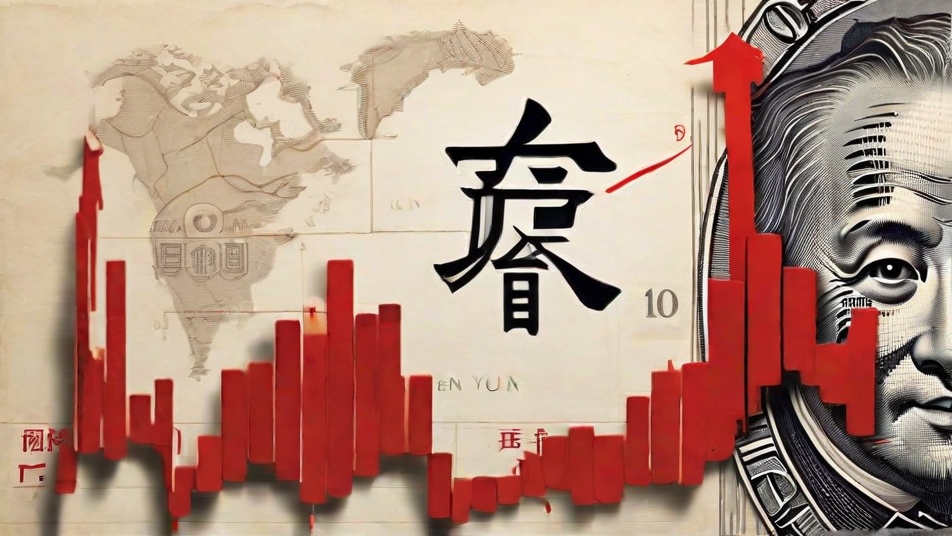In a monumental shift, the Chinese yuan has surpassed the euro, shaking the foundations of global trade and raising concerns about the future of the US dollar’s dominance.
This remarkable achievement is fueled by a combination of factors, including increased borrowing from mainland banks, a rise in the yuan’s global currency share in trade finance, and a surge in yuan-denominated bonds issuance.
While this milestone supports Beijing’s aspirations to internationalize the yuan, challenges remain in its limited use and geopolitical alignment.
Caution must be exercised in assessing the yuan’s progress and acknowledging its local form of internationalization.
Key Takeaways
- The rise of the Chinese yuan as a top trade currency is attributed to factors such as companies borrowing from banks on the mainland due to low interest rates and an increase in the yuan’s share as a global currency in trade finance.
- The yuan surpassing the euro in global trade finance has implications such as support for Beijing’s ambitions to internationalize the yuan and a surge in borrowing from Chinese banks by international companies.
- Progress in yuan internationalization is evident with record highs in gauges measuring its global use, but there are limitations such as limited use and circulation of international yuan bond proceeds and the reluctance of geopolitically aligned countries with the US to switch to using the yuan.
- The dominance of the US dollar in global trade is being impacted by the growing share of the yuan in global financing, but the US dollar still maintains overwhelming dominance at 84.2%. The use of the yuan in trade settlement is mainly within specific bilateral channels, and countries aligned with the US are unlikely to adopt the yuan, limiting its global use in trade.
Factors Behind the Yuan’s Rise in Global Trade
The rise of the Chinese yuan in global trade can be attributed to several factors.
One factor is its increasing share as a global currency in trade finance. The yuan’s share has grown from 3.9% to 5.8%, indicating its growing prominence in international transactions.
Another contributing factor is the record issuance of yuan-denominated bonds. Companies are borrowing from banks on the mainland due to low interest rates, which has contributed to the yuan’s growth. Foreign companies are also raising funds through panda and dim sum bonds, further boosting the yuan’s prominence.
Additionally, the depreciation of the yuan and rate cuts have made borrowing costs cheaper. This has incentivized companies to borrow more, thereby increasing the demand for yuan.
Implications of the Yuan Surpassing the Euro
As the Chinese yuan surpasses the euro in global trade finance, its implications reverberate across the international economic landscape. This shift in the balance of power between the two currencies has significant consequences for the global economy. To better understand these implications, let’s examine a table that highlights some key factors:
| Implications of the Yuan Surpassing the Euro |
|---|
| Support for Beijing’s ambitions to internationalize the yuan |
| Surge in borrowing from Chinese banks by international companies |
| Record high issuance of panda and dim sum bonds |
| Increase in the yuan’s share in global trade finance |
| Limited adoption of the yuan by countries aligned with the US |
This table illustrates the potential benefits and limitations of the yuan’s rise. On one hand, it supports China’s goal of making the yuan a global currency, as evidenced by the surge in borrowing from Chinese banks and the record issuance of panda and dim sum bonds. However, the dominance of the US dollar in global trade finance and the limited adoption of the yuan by countries aligned with the US pose challenges to its widespread use.
Impact on the Dominance of the US Dollar
The rise of the Chinese yuan poses a threat to the dominance of the US dollar in global trade. Currently, the US dollar holds an overwhelming share of 84.2% in global trade finance. However, the yuan’s growing share in global financing, as one of China’s internationalization priorities, cannot be ignored.
Gauges of yuan internationalization have hit record highs for banks such as Standard Chartered Bank and Bank of China. There has also been a surge in the use of the yuan in trade settlement, although mainly within specific bilateral channels.
Nevertheless, the global use of the yuan in trade is limited by the unlikelihood of countries aligned with the US adopting it. Geopolitical factors and the dominance of the US dollar continue to hinder the widespread adoption of the yuan in global trade.
Conclusion
In conclusion, the recent surge of the Chinese yuan surpassing the euro in global trade marks a significant milestone in Beijing’s efforts to internationalize its currency.
Although limitations to the yuan’s internationalization persist, such as its limited use in bond proceeds and the reluctance of geopolitically aligned countries to switch to the yuan, its progress cannot be underestimated.
However, caution should be exercised in overestimating its impact, considering the influence of geopolitical alignment on global trade use.
Yesterday News:







